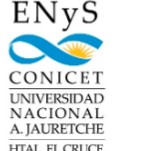Intracranial electroencephalography is the common clinical diagnosis protocol to identify the epileptogenic zone for surgical treatment of drug resistant epilepsy patients. Analyze simultaneous recordings with clinical macro- (cM) and research micro-electrodes (rM) allows us to obtain a better understanding at microscale of how neural network works before and during epileptic seizures. We registered brain activity from cM and rM (AdTech,USA) implanted bilaterally in amygdala and hippocampus of two patients with bilateral mesial-temporal epilepsy, following clinical criteria. Recordings were obtained from 96 microelectrodes located at Seizure-Onset-Zone (SOZ;n=32), ipsilateral but outside of SOZ (n=16) and contralateral to SOZ (n=48). It was noted that the detection and clustering techniques are very sensitive to background noise, which is ten-fold increased during seizures. A way to overcome this drawback is analyze the firing rate (FR) of neurons whose spikes exceeds at least 5 times the amplitude of noise during seizure. We generate different types of micro networks with the SU and MU registered in SOZ and estimate the effective connectivity from autoregressive multivariate models. The preliminary results described 84% of neurons (128/152) showing different types of seizure-related firing patterns. In terms of effective connectivity, we find that the dynamics of the micro networks before and during the seizures present characteristic out-degree patterns.
P#188
Analysis of Effective Connectivity in micro networks of Single and Multi-Unit Activity and Local Field Potential in Human Mesial Temporal Lobe Epilepsy
Santiago Collavini
- Florencio Varela,
- Argentina
- Santiago Collavini ¹
- , Ulises Romero ¹
- , Carlos H. Muravchik ²
- , Silvia Kochen ¹
- 1 Neurosciences and Complex Systems Unit (EnyS), CONICET, Hosp. El Cruce “N. Kirchner”, National University A. Jauretche (UNAJ), Calchaqui 5401, Florencio Varela 1888, Buenos Aires,Argentina,
- 2 Research Institute of Electronics, Control and Signal Processing (LEICI), National University of La Plata-CONICET, Calle 116 s/n, La Plata B1900, Argentina.
- 3 National Council of Scientific and Technical Research(CONICET), Argentina,
- 4 Scientific Research Commission of the Province of Buenos Aires (CIC-PBA), Argentina,

